Yoshino and Omine吉野・大峯
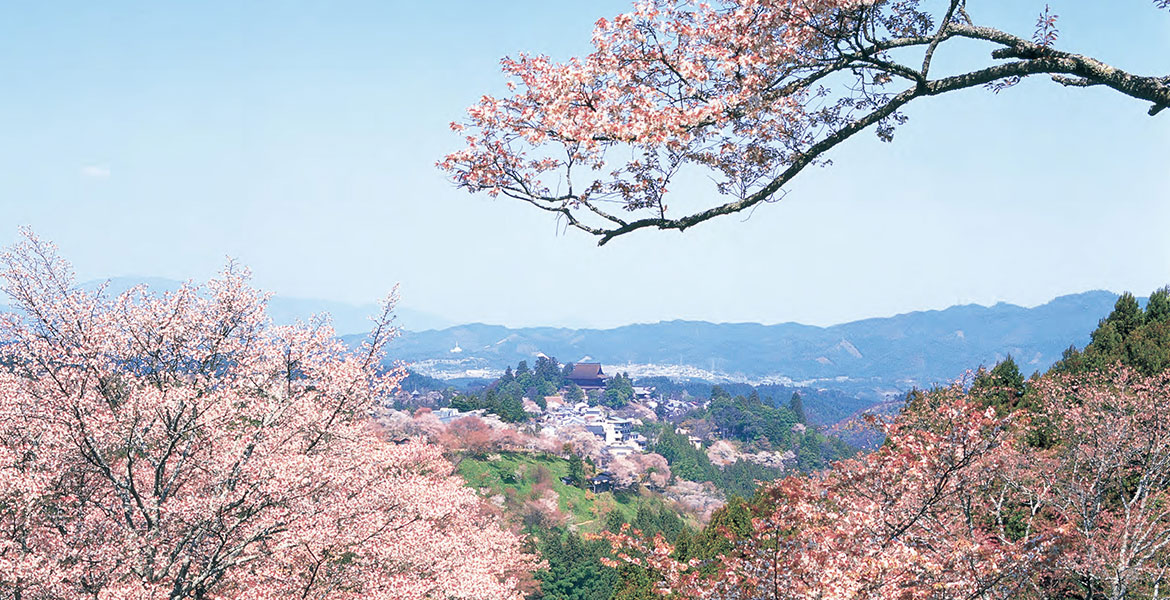
The sacred site for Shugendo Yoshino and Omine, which consists of steep mountains reaching altitudes of over 1,000m, is divided into two parts. North of Mt. Aonegamine of the Omine Mountains, which is the water divide of the Kii Mountains, is called "Yoshino" and south of it is called "Omine". Already in the mid-10th century, the status of this region as the most important sacred mountain in Japan had been established to such extent that its reputation reached China.
Yoshino that had been the object of the mountain worship from ancient times became increasingly active and influential, received attention largely in association with En no Gyoja.
Shugendo, which put importance on mountain ascetic practices, calls walking through the mountains with hard practice "Okugake" or "Mineiri", and Omine is the stage for it. Formidable ridges that are closed off by ice and snow during winter have been revered as objects of worship, and "Omine Okugakemichi" connects many ascetic practicing points and base temples and shrines.
Sacred site "Yoshino and Omine" includes Yoshinoyama, Yoshino Mikumari-jinja, Kimpu-jinja, Kimpusen-ji, Yoshimizu-jinja, and Ominesan-ji.
Yoshinoyama吉野山
At the northern end of the Omine Mountains Yoshinoyama covers the Muta area, which is at the south of the Yoshino River, to Aonegamine. A pilgrimage route runs along the mountain ridge, and temples, shrines, accommodation, and shops on both sides of the routes forms a temple-shrine town. Cherry trees on the surrounding ridges and slopes, which have been planted and donated widely by the religious activities that based on the legend that En no Gyoja had carved the principal image, make this a unique cultural landscape.
Law protection: Historic Site and Natural Beauty
| Law protection | Historic Site and Natural Beauty |
|---|---|
| location | Yoshinoyama Yoshino Town Yoshino, County Nara Prefecture [MAP 1-A] |
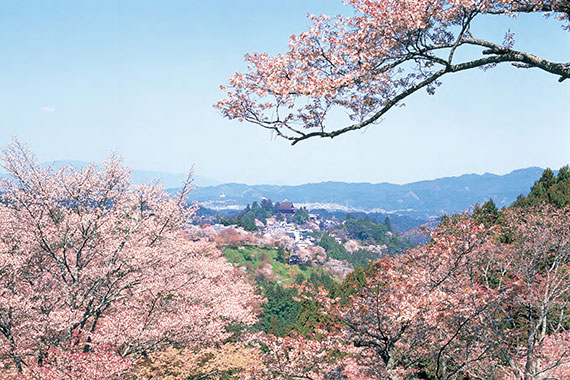
Yoshino Mikumari-jinja吉野水分神社
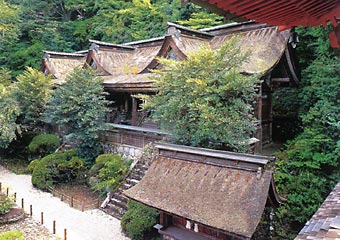
Originated in the ancient worship of divine water, this shrine is also called Komori-jinja. It is said that this shrine was once placed on Mt. Aonegamine and in the 12th century, under the influence of Shinto and Buddhism Unity theory, it came to be believed that the shrine deity was the incarnation of Jizo-bosatsu.
Shrine includes Honden, Haiden, Heiden, Romon and Kairo, all of which were reconstructed in 1605 by Hideyori who succeeded Toyotomi Hideyoshi.
| Law protection | Compound (Historic Site), Honden (including Sukibei and four ridge boards), Haiden(including four Tsuritoro), Heiden, Romon and Kairo (Important Cultural Property) |
|---|---|
| location | Yoshinoyama Yoshino Town Yoshino, County Nara Prefecture [MAP 1-B] |
Kimpu-jinja金峯神社
Deifying Kanayamahiko (Konsho-myojin) who is the landlord god of Kimpusen(from Yoshinoyama to Mt. Sanjogatake), this temple along with Yoshino Mikumari-jinja played an significant role as the Yoshino area that came to be revered as sacred mountains.
As Shugendo became prosperous, it ruled that ascetic practitioners had to go through four gates before Mineiri, and there was a Torii gate in front of the shrine that is the second one for them to go through.
| Law protection | Compound (Historic Site) |
|---|---|
| location | Yoshinoyama Yoshino Town Yoshino, County Nara Prefecture [MAP 1-C] |
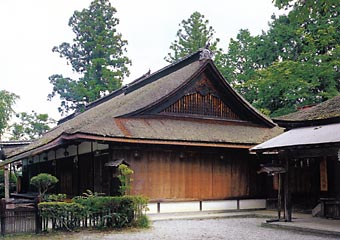
Kimpusen-ji金峯山寺
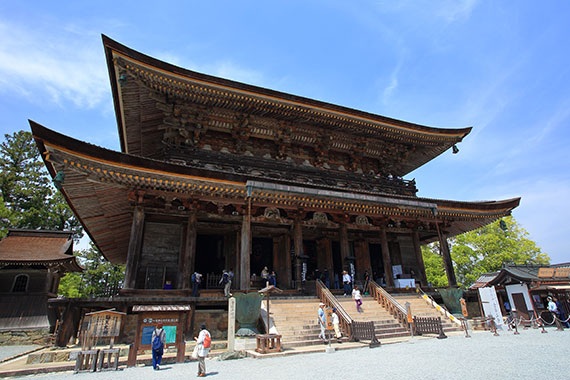
As a central temple complex for the Shugendo and the sacred area for mountain faith, this temple has received great reverence since the mid-Heian era. Since the main hall of Ominesan-ji on Mt. Sanjogatake was called "Sanjo Zaodo", the main hall of Kimpusen-ji was called "Sange Zaodo". In the compound, centered by Zaodo, there stand a double-storied Niomon that faces north in the north of the main hall, and Kane no Torii that is a "Hosshimmon" to solidify the will of ascetic practice.
| Law protection | Compound (Historic Site), Hondo (National Treasure), Niomon (including Futaku) (National Treasure), Kane no Torii (Important Cultural Property) |
|---|---|
| location | Yoshinoyama Yoshino Town Yoshino, County Nara Prefecture [MAP 1-D] |
Yoshimizu-jinja吉水神社
This shrine had been called "Yoshimizu-in" which was attached to Kimpusen-ji before the Shinto and Buddhism Separation Decree in the 1st year of Meiji and the decrees to annul Shugen were issued. Legend tells that Minamoto no Yoshitsune stayed here when he hid himself and it is also said that Emperor Godaigo used this shrine as a home.
| Law protection | Compound (Historic Site), Shoin (Important Cultural Property) |
|---|---|
| location | Yoshinoyama Yoshino Town Yoshino, County Nara Prefecture [MAP 1-E] |

Ominesan-ji大峰山寺
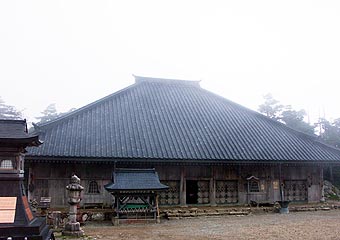
This is a temple of the Shugendo is located on the mountaintop of Mt. Sanjogatake, which has been revered as a sacred mountain since ancient times. The temple was constructed in a sacred place, where according to a legend, Zao Gongen appeared in response to En no Gyoja's prayer. The main hall was constructed in 1691 and it is said that it was expanded to the present scale in1703. Having thick pillars and low eaves, this is a unique construction built on a high mountain.
| Law protection | Compound (Historic Site), Hondo (including six ridge boards, nineteen distorted frames, two name plates, fifty-one donation boards, ten old round cooper tiles and ten old silver tiles) (Important Cultural Property) |
|---|---|
| location | Tenkawa Village Yoshino County, Nara Prefecture [MAP 1-F] |